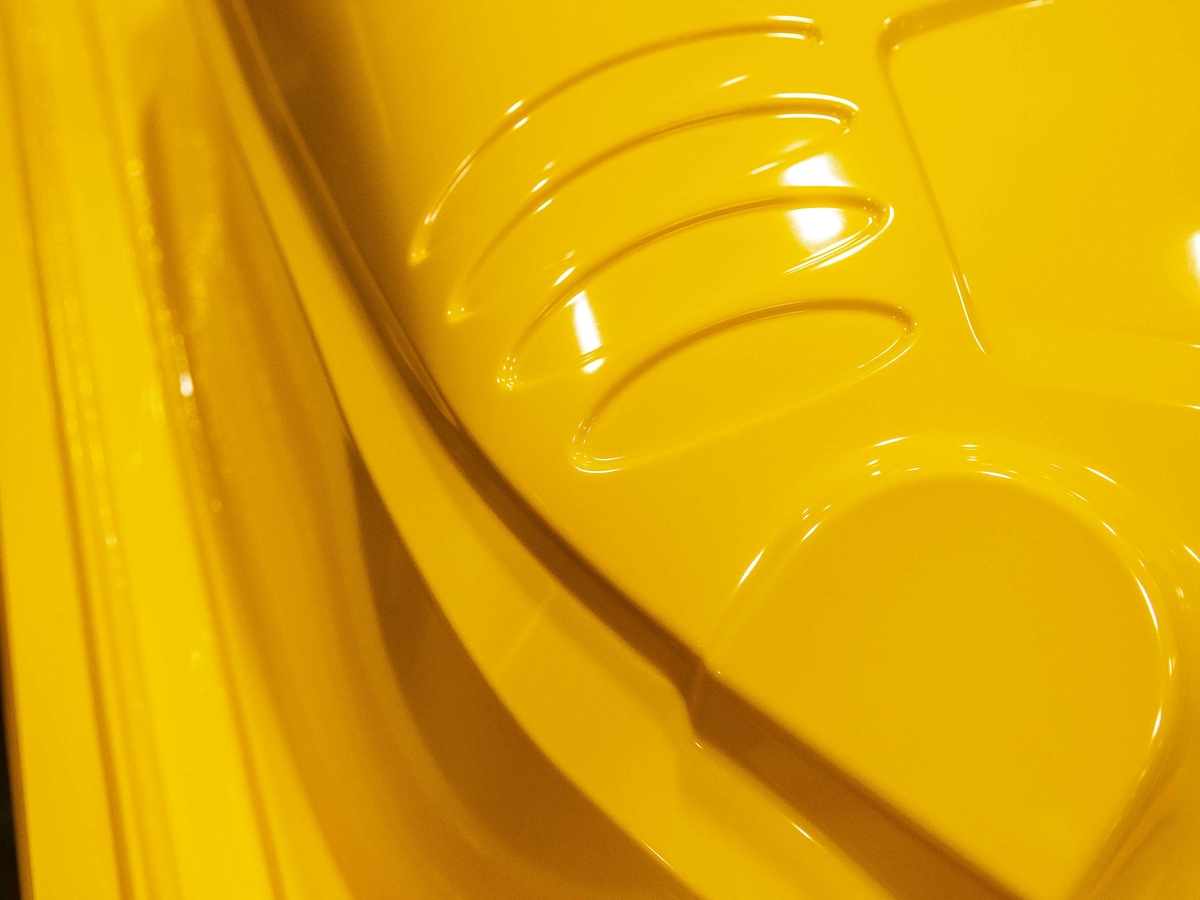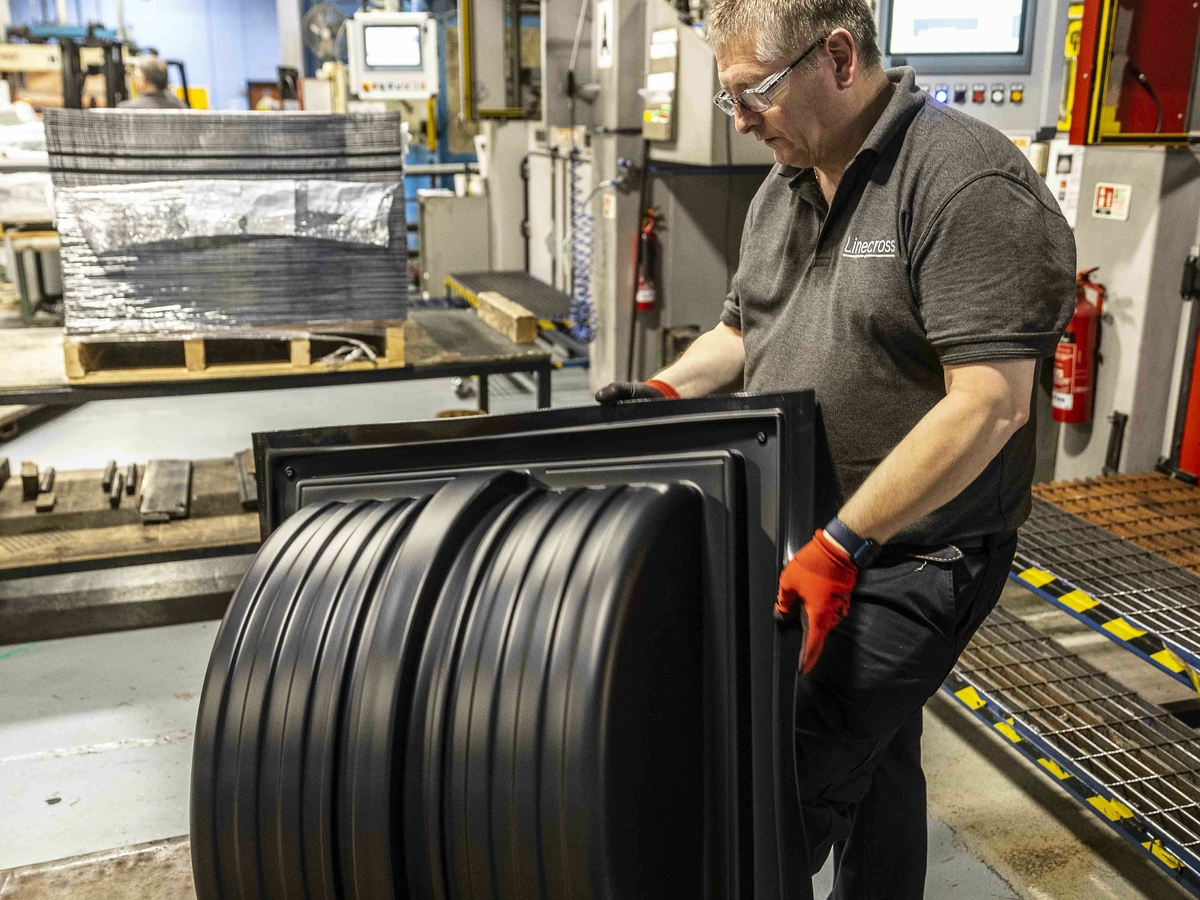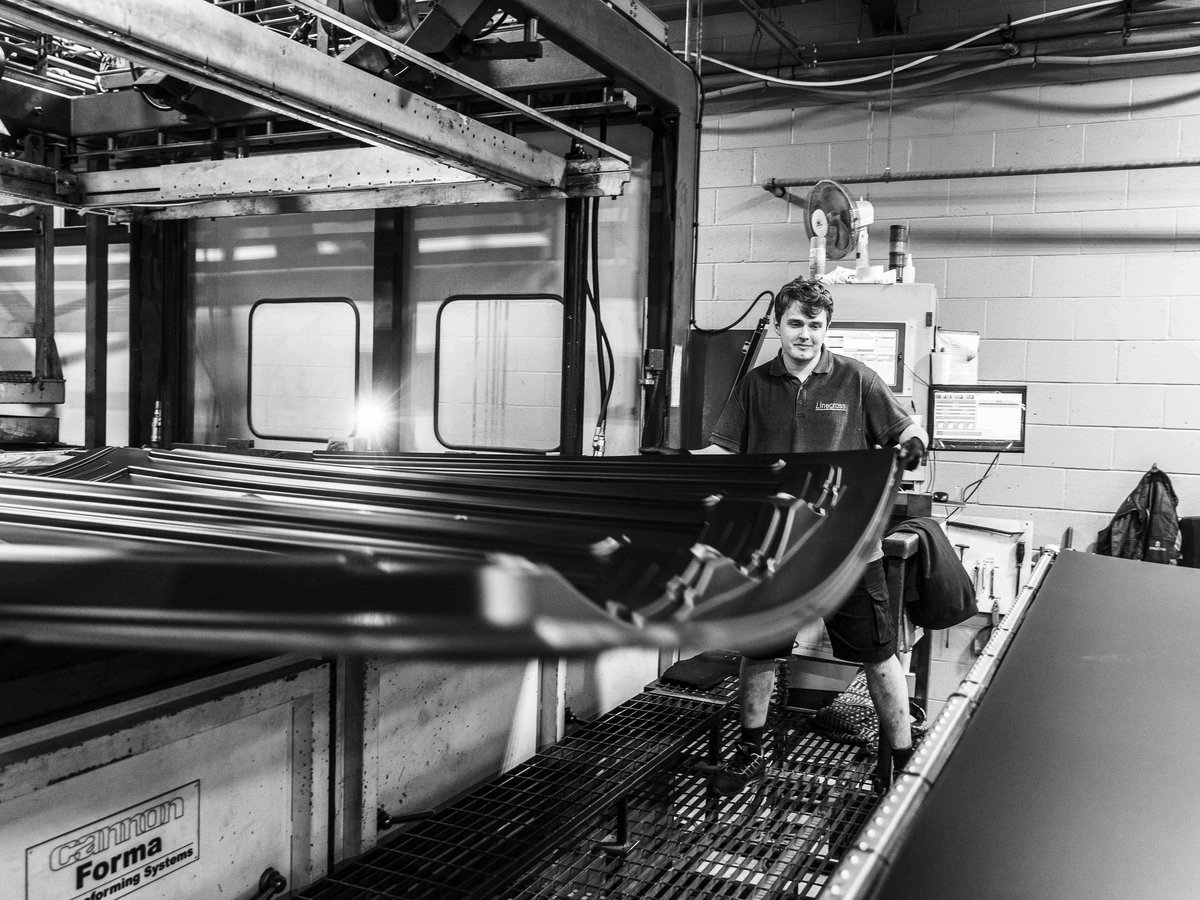CORE
Vacuum forming is a flexible process giving a three-dimensional shape to an extruded thermoplastic material. Our sophisticated halogen heating systems can process even the most challenging engineering materials with our state-of-the-art moulding machines.
Here we are producing high-gloss exterior components using 100% recyclable material which doesn’t require painting.
We have 16 state of the art Cannon and Geiss thermoforming machines and are proud to be the UK’s leading independent vacuum forming company.
Vacuum forming is a manufacturing process that involves heating a plastic sheet and then stretching it over a mould using a vacuum.
The vacuum removes the air between the sheet and the mould, causing the plastic to conform to the mould's shape. Once cooled, the plastic retains its formed shape, resulting in a three-dimensional object.
Vacuum forming is a versatile and cost-effective method for producing large quantities of lightweight, custom components.




Vacuum forming is a versatile manufacturing process that can work with a variety of thermoplastic materials. Thermoplastics are a class of polymers that become pliable when heated and solidify when cooled, making them suitable for vacuum forming.
Some common thermoplastics used in vacuum forming include:
| Material | Key Properties |
|---|---|
| Polyethylene (PE) | This is a widely used thermoplastic known for its low cost, flexibility, and ease of forming. It is often used for packaging, trays, and simple shapes. |
| Polypropylene (PP) | PP offers good chemical resistance and is commonly used for food containers, automotive parts, and industrial components. |
| Acrylic – Perspex (PMMA) | Hygroscopic Medium/strong Temperature-sensitive, can become brittle 0.3 – 0.8% shrinkage rate Prone to shattering but good to work manually and takes cellulose and enamel sprays Available in multiple colours, can be transparent or opaque |
| ABS (Acrylonitrile Butadiene Styrene) | ABS is a tough and rigid thermoplastic, commonly used for automotive parts, consumer electronics, and toys. |
| PVC (Polyvinyl Chloride) | PVC is known for its durability and chemical resistance. It is used in applications such as blister packaging, trays, and signs. |
| PETG (Polyethylene Terephthalate Glycol): | PETG offers high clarity and impact resistance, making it suitable for retail displays, medical packaging, and protective covers. |
| PC (Polycarbonate) | PC is known for its excellent optical properties, impact resistance, and high-temperature resistance. It is used in applications such as safety equipment, electronic enclosures, and automotive components. |
| PMMA (Polymethyl Methacrylate) | PMMA, also known as acrylic or Plexiglas, offers high clarity and weather resistance, making it suitable for signs, displays, and architectural applications. |
| Kydex | Kydex is a brand of thermoplastic acrylic-polyvinyl chloride (PVC) alloy with enhanced rigidity and impact resistance. It is commonly used in aerospace, transportation, and medical equipment applications. |
Material:
Polyethylene (PE)
Key Properties:
This is a widely used thermoplastic known for its low cost, flexibility, and ease of forming. It is often used for packaging, trays, and simple shapes.
Material:
Polypropylene (PP)
Key Properties:
PP offers good chemical resistance and is commonly used for food containers, automotive parts, and industrial components.
Material:
Acrylic – Perspex (PMMA)
Key Properties:
Hygroscopic Medium/strong Temperature-sensitive, can become brittle 0.3 – 0.8% shrinkage rate Prone to shattering but good to work manually and takes cellulose and enamel sprays Available in multiple colours, can be transparent or opaque
Material:
ABS (Acrylonitrile Butadiene Styrene)
Key Properties:
ABS is a tough and rigid thermoplastic, commonly used for automotive parts, consumer electronics, and toys.
Material:
PVC (Polyvinyl Chloride)
Key Properties:
PVC is known for its durability and chemical resistance. It is used in applications such as blister packaging, trays, and signs.
Material:
PETG (Polyethylene Terephthalate Glycol):
Key Properties:
PETG offers high clarity and impact resistance, making it suitable for retail displays, medical packaging, and protective covers.
Material:
PC (Polycarbonate)
Key Properties:
PC is known for its excellent optical properties, impact resistance, and high-temperature resistance. It is used in applications such as safety equipment, electronic enclosures, and automotive components.
Material:
PMMA (Polymethyl Methacrylate)
Key Properties:
PMMA, also known as acrylic or Plexiglas, offers high clarity and weather resistance, making it suitable for signs, displays, and architectural applications.
Material:
Kydex
Key Properties:
Kydex is a brand of thermoplastic acrylic-polyvinyl chloride (PVC) alloy with enhanced rigidity and impact resistance. It is commonly used in aerospace, transportation, and medical equipment applications.
These are just a few examples of thermoplastics that can be vacuum formed. The choice of material depends on the specific requirements of the product, including mechanical properties, transparency, chemical resistance, and cost.
At Linecross we provide a complete ‘concept to production’ service from customised product development to assembly and sequenced supply. Find out more about how our range of processes can support your business.
web design - Dsquared